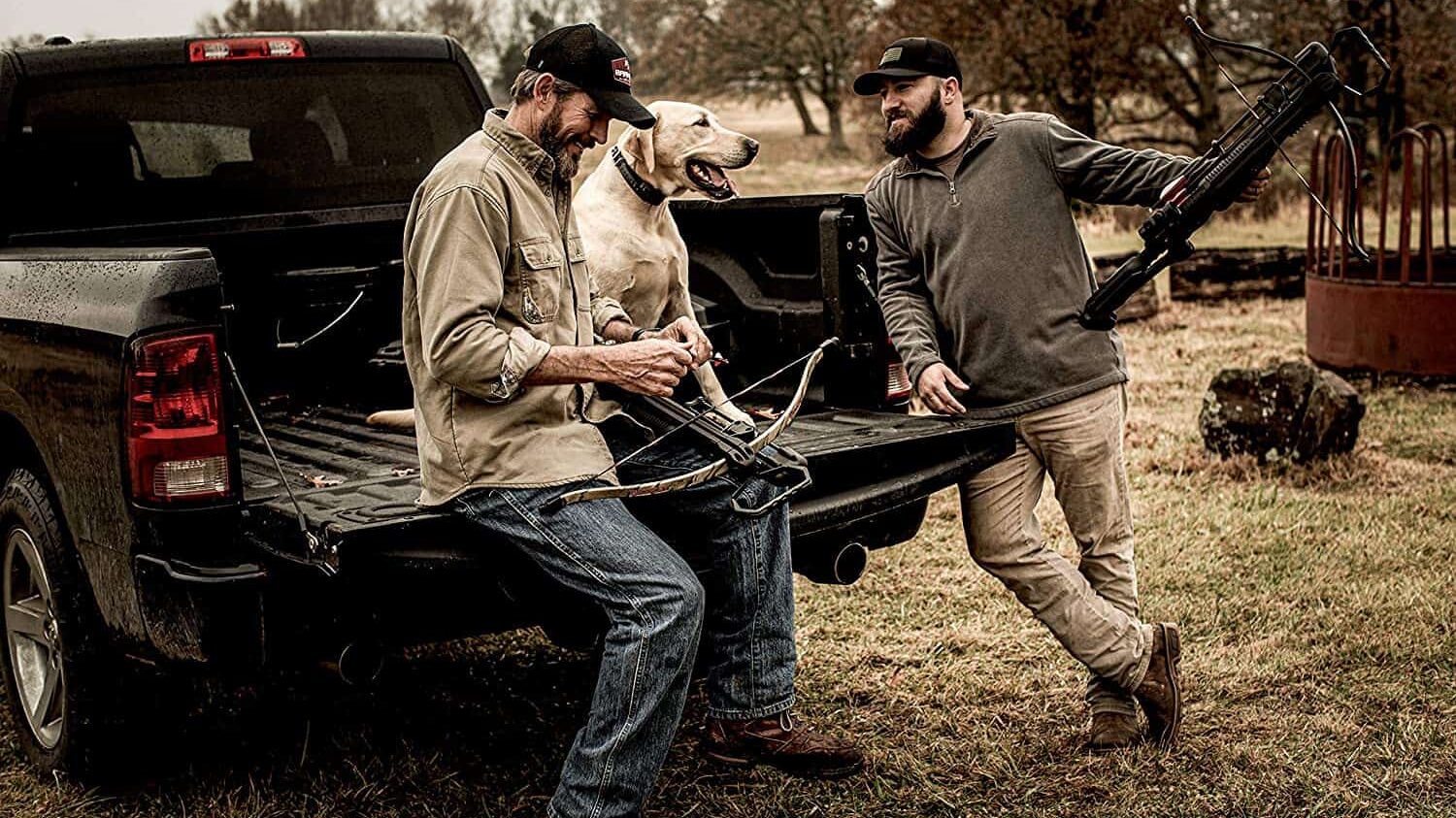Since the development of the medieval crossbow in the middle ages, there have been tremendous technological improvements in the crossbow properties to ensure better speed and accuracy. These improvements have guaranteed the development of many crossbow designs, each with unique uses due to their differing properties and designs.
For example, there are crossbows used as a weapon, and others for hunting, target practicing, and archery. The following information may help you decide which type of crossbow is appropriate for you.
What are the two most common types of crossbows?
While there are other various types of crossbows, the two most common ones are the recurve bows and the compound bows. They are two of the best crossbow on the market, and both work by using a mechanical arm that pulls the string back and then releases it to shoot arrows or bolts.
Reinforced wood is the traditional material for making them, but the new crossbow designs utilize composite materials, such as carbon fiber and aramid. These materials allow for lighter weight and a more powerful bow without sacrificing durability.
Recurve crossbows
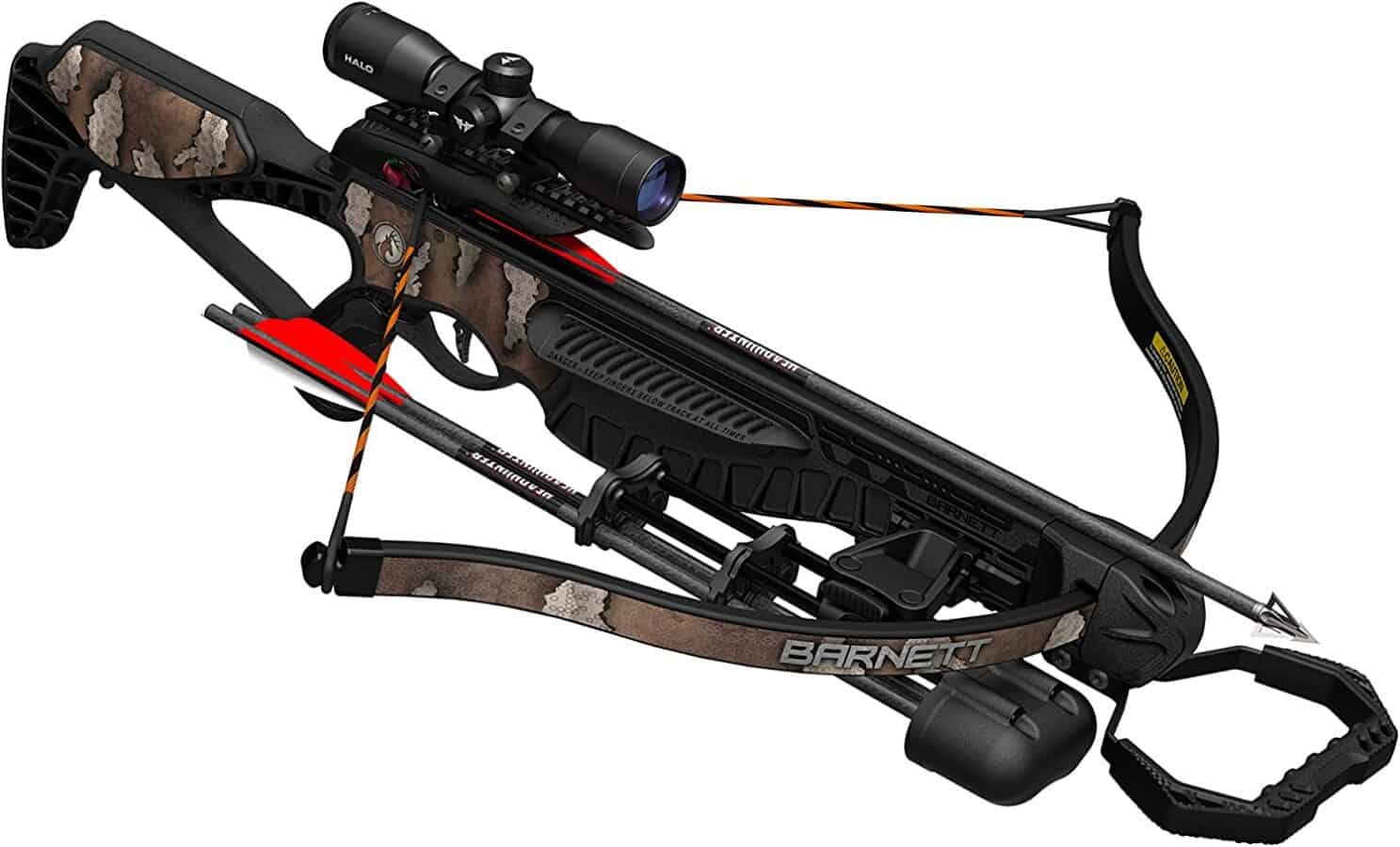
A recurve crossbow has a straightforward design that has no cables and cams. It has two limbs positioned horizontally on the stock and barrel to give the crossbow bolt the required power. This bow gets its name from the distinctive limb shape, which curves away from the bow’s front before recurving towards it in an S-shape.
The limbs’ curved shapes act as extremely powerful spring that launches the bowstring, propelling the bolt at tremendous speeds. Due to its simple and lightweight design, a recurve crossbow may be the best option if you hunt in remote regions where you require dependability and potential on-the-spot repairs.
One of the best recurve crossbows to consider is the Barnett Wildcat Camo Recurve Crossbow.
Pros
- They are much more reliable due to their simple design
- They are lightweight
- Easy to hold steady and to aim due to their lightweight
- They are stylish and classic
Cons
- Requires more strength to load and cock
- Their power may not be suitable for hunting large animals
- They are less agile and maneuverable due to their large size
Compound crossbows
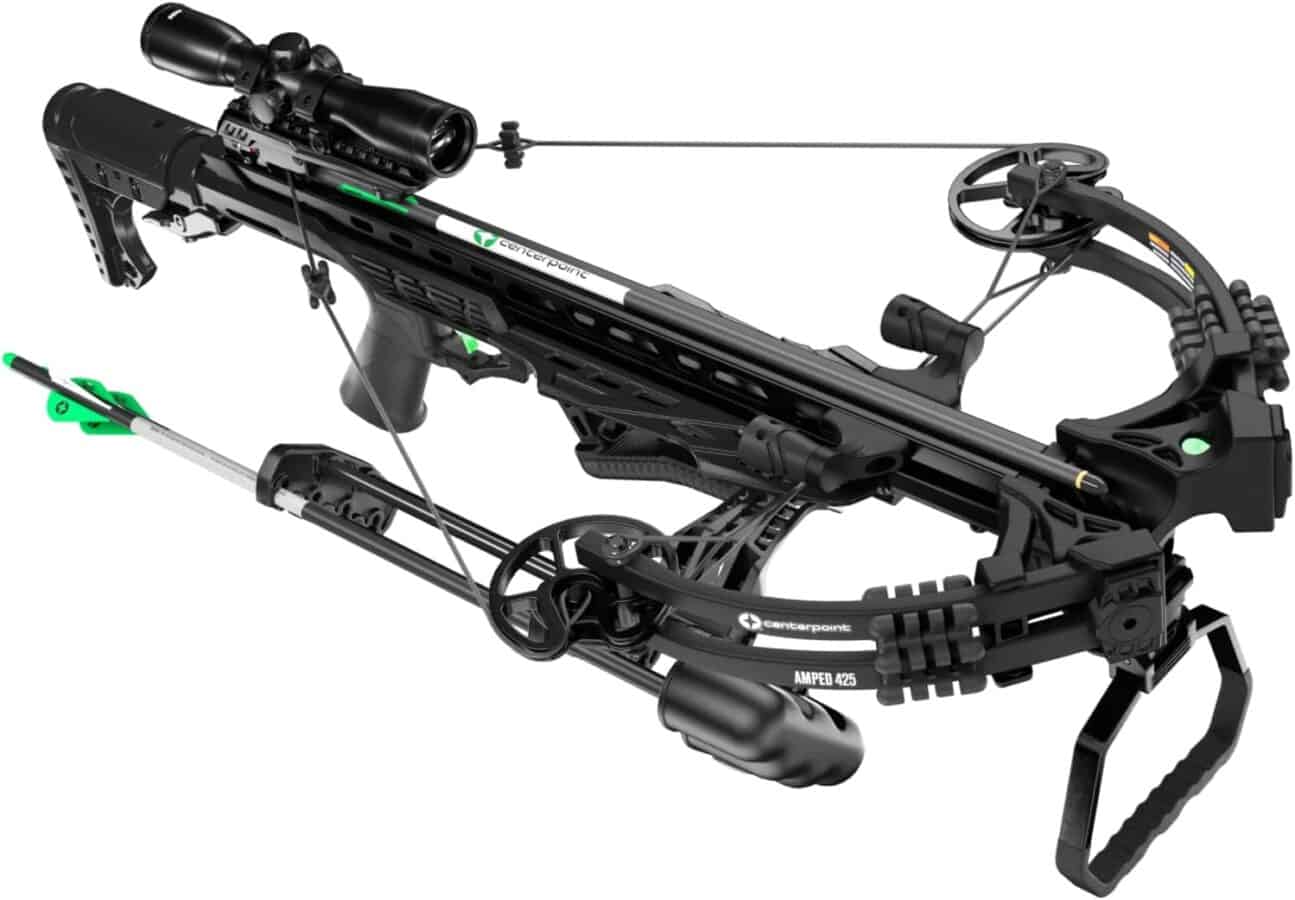
The compound crossbow features a more sophisticated construction, making it a more powerful crossbow. It utilizes cables and a pulley system called cams and cables to give its arrows increased speed and power. The compound crossbow features smaller limbs and barrels since it does not rely on them for power.
Dues to this shorter barrel and limbs, the crossbow is a compact design, but the cams and cables increase the overall weight. The compound crossbow is also generally narrow, but when fired, it makes more noise than the recurve crossbow. Its robust nature and speed make it best suited for hunting large animals.
The compound crossbow’s reloading speed is also quicker due to its more compact size. One of the fastest crossbows to consider in this category is the AW Compound Bow Kit, reaching a speed of up to 320 fps.
Pros
- A compound bow is the most potent and fastest crossbow on the market
- They are compact, which ensures easier maneuverability in dense forest
- They are easier to draw, which provides quick reloading
Cons
- They are complex, which makes repair and maintenance complicated
- They are heavy, which inhibits their accuracy
- Compound crossbows make noise when shooting
Other types of crossbows
Repeating crossbows
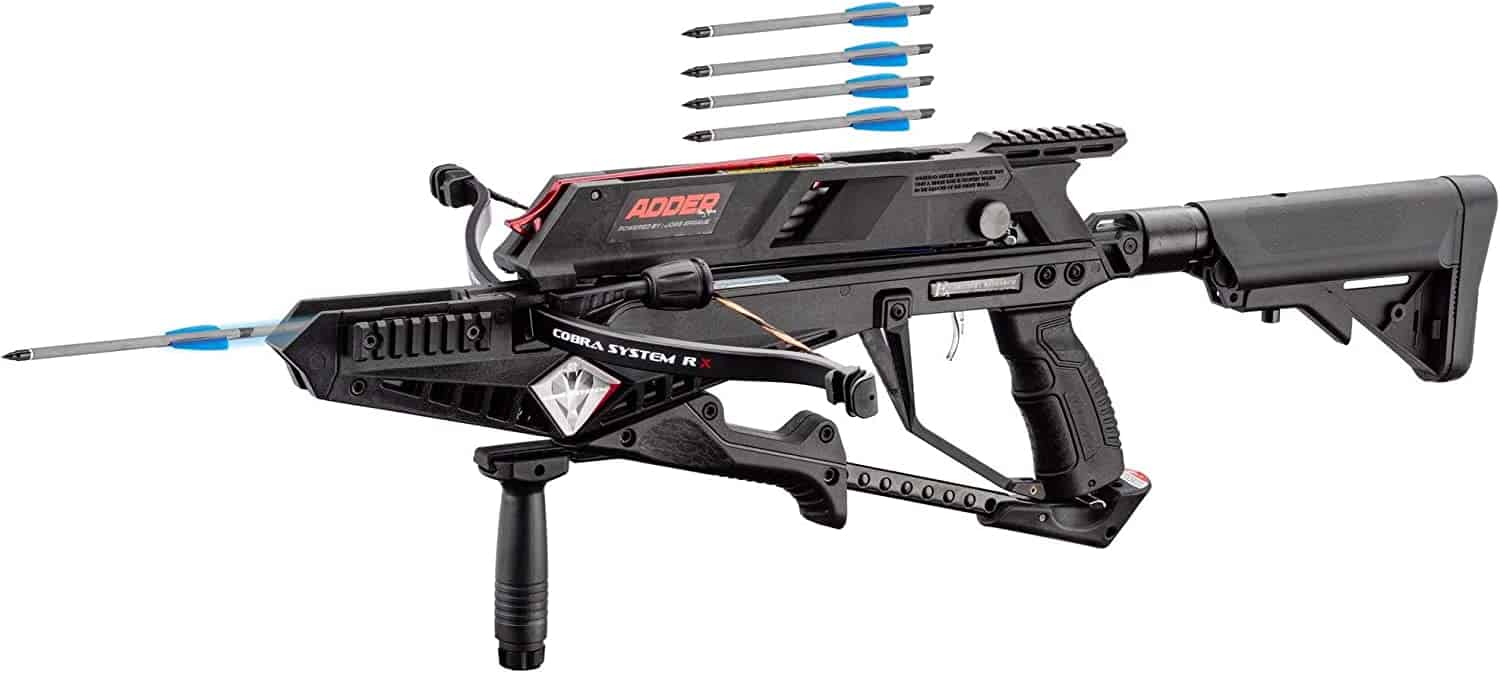
With a repeating crossbow, you can perform each of the three distinct crossbow operations—stringing the bow, setting the bolt, and firing it, with a quick, one-handed motion. On top of the crossbow is a magazine with bolts and a rectangular handle to move the system forward and backward. This enables a crossbow to shoot at a faster rate than usual.
According to its construction, the repeating crossbow resembles a hybrid of a crossbow and a gun. When you eject an arrow from the groove, another one continuously fills using a technique similar to a gun.
Modern repeating crossbows, such as the EK Archery RX Adder, can continuously shoot up to 5 arrows in less than 30 seconds, which stamps their suitability as a weapon. It is also capable of including a string damper and an anti-vibration system, making it appropriate for extended hunting expeditions.
Pros
- It’s an ergonomic high, performance design.
- It has an automatic magazine and many accessories, such as the sight, replacement limb tip, safety glasses, and front grip.
- It’s easy to arm, handle and maintain
- With adjustable stock length to enhance shooting accuracy
- Features built-in cocking lever that allows for easy cocking
- With an easy assembly and disassembly system
Cons
- They are expensive
Reverse draw crossbows
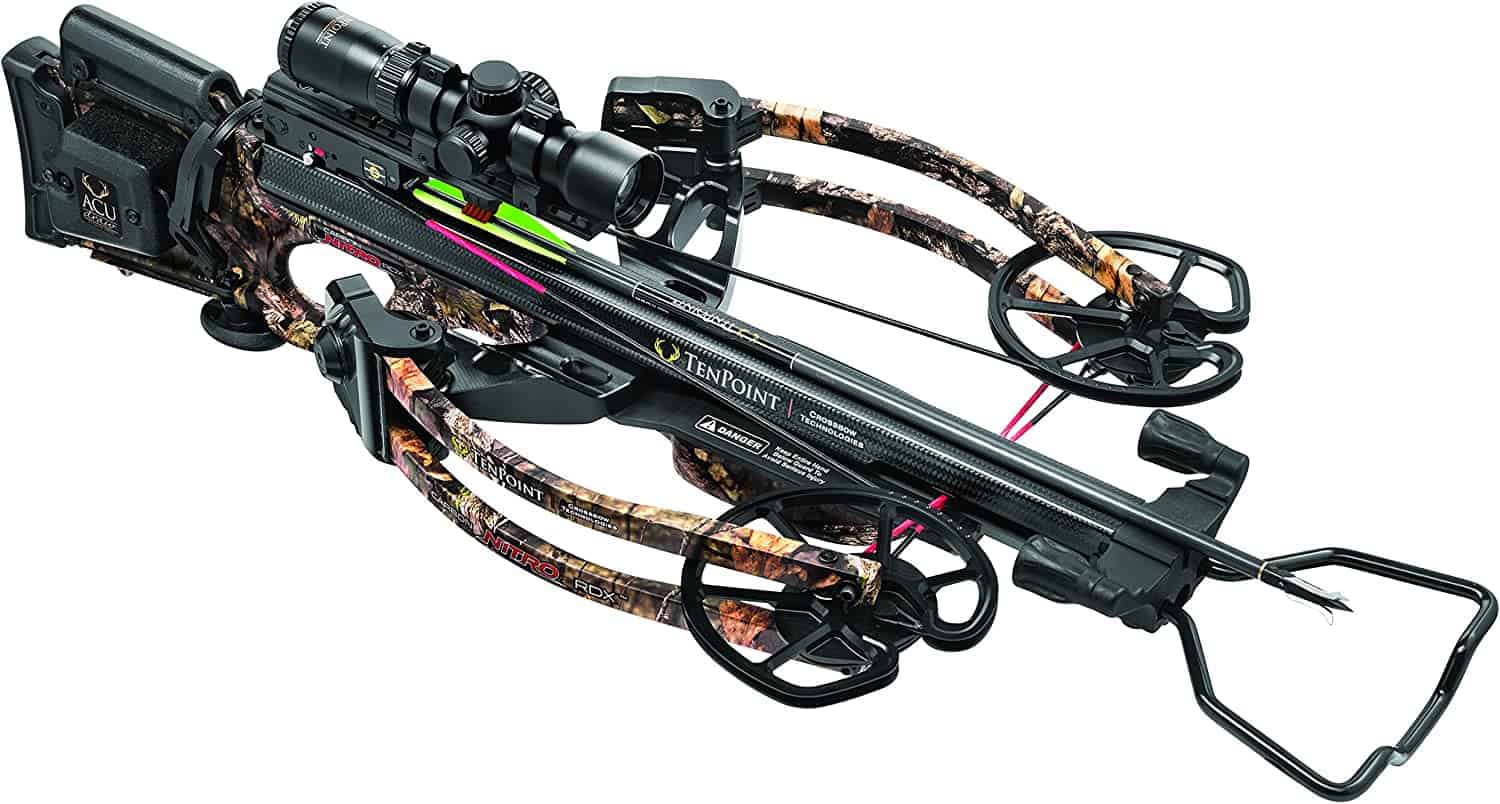
A reverse-draw crossbow has its limbs mounted opposite from a typical crossbow, making it arguably the fastest crossbow in the archery world. To provide the string with extra space to move down the rail, a reverse-draw crossbow lets you quickly draw it from in front of the limbs, cable, and riser.
This movement results in a longer driving stroke, which increases speed and flattens the arrow’s trajectory. Another benefit is that, unlike a crossbow with a traditional draw, the balancing point is in the middle of the bow rather than at the front, enhancing simplicity and accuracy.
Also, because the length of the string’s travel generates energy, reverse-draw crossbows have a reduced draw weight, simplifying the cocking process. Additionally, the wheels, limbs, and string aren’t carrying as much weight in this type of bow, making them less prone to breakages and snapping.
Due to its power, the reverse draw crossbow, such as the TenPoint Carbon Nitro RDX Crossbow Package, is an excellent option for many people hunting large animals and hunting with some form of physical constraint.
Pros
- With increased power stroke
- Allows for easier cocking
- With a lower draw weight
- Enhances shooting accuracy
Cons
- They can hinder maneuverability due to their long size
- They are also hard to load
Pistol crossbows
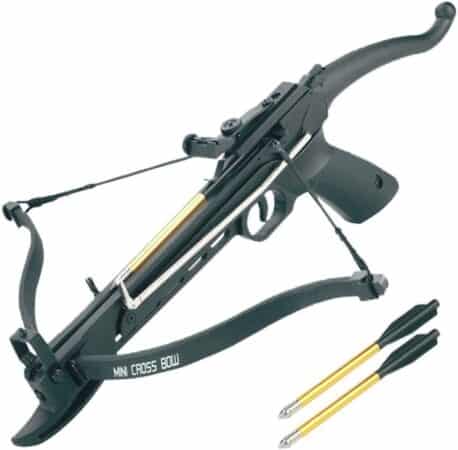
A pistol crossbow is one hand pistol-like bow with a shorter draw and lesser power than a conventional crossbow. It is a relatively short-range weapon used to hunt small wildlife and quick-moving rodents like squirrels, ducks, rats, rabbits, and ducks. These crossbows have tremendous power and use short aluminum or plastic bolts as ammunition.
They are much less daunting than full-size crossbows, making them ideal for beginners who want to try hunting, shooting, or some light-target practice. If you seek the best pistol crossbow, consider the 80 Pound Self-Cocking Pistol Crossbow.
Pros
- They are suitable for beginners
- With short draws
- They are smaller, lighter, and more portable than other crossbows.
- They are also less expensive compared to other crossbows.
Cons
- They have less power
- They do not come assembled
- The string wears faster than other types of bows
